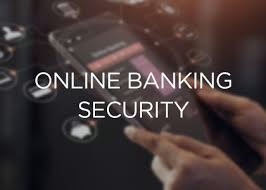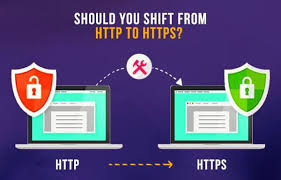Online banking has been a part of our financial landscape for several years now, evolving significantly since its inception. At first, many people viewed it with scepticism, unsure about the safety and security of managing their money online. However, over time, this method of handling finances has demonstrated its reliability and efficacy. While there are indeed some risks associated with online banking—most notably the threat posed by malware or fraudulent websites that can compromise your login credentials—the good news is that by adhering to some straightforward guidelines, you can navigate these dangers effectively.

There are five critical factors to keep in mind when engaging in online banking: First and foremost, it’s crucial to ensure your computer is secure; this means keeping your operating system updated and using reputable antivirus software. Secondly, be vigilant against counterfeit websites and phishing emails that attempt to deceive you into revealing sensitive information. Thirdly, stay informed about potential money transfer scams that could lead you astray. Fourthly, always prioritise maintaining a private connection when accessing your bank account online. Lastly, consider the implications of mobile banking; while convenient, it also requires careful handling.
How secure is online banking today? Since its introduction during the early days of the Internet revolution, significant advancements have been made in safeguarding our financial transactions. In general terms, modern online banking systems are pretty secure. Financial institutions have a vested interest in protecting their customers’ assets because any lapse on their part could result in substantial losses for them as well.
Nonetheless, it’s essential to remain aware of specific vulnerabilities that exist within this digital realm. The primary concerns revolve around the potential theft of our login information through malicious software or deceptive sites, as well as scams designed to trick us into misdirecting funds. Fortunately, by taking proactive measures—such as keeping your computer up-to-date with security patches and educating yourself about common phishing tactics—you can effectively shield yourself from most threats.

Implementing these protective strategies is relatively straightforward and well within reach for anyone willing to take a few moments to learn more about best practices for safe online banking. As we delve deeper into this topic together, you’ll discover practical tips and insights that will empower you to manage your finances securely from the comfort of your home or on the go with confidence!
For several years now, online banking has woven itself into the fabric of our financial practices, undergoing remarkable transformations since it first emerged. Initially, a fair number of individuals approached this new way of managing finances with a degree of wariness, questioning the safety and security involved in handling their money through the Internet. However, as time has progressed, online banking has proven its worth and reliability to consumers. While there are indeed certain risks tied to this digital approach—most notably threats from malware or fraudulent websites that could jeopardise your login information—the silver lining is that by following some simple yet effective guidelines, you can adeptly navigate these potential hazards.

When it comes to engaging in online banking, there are five essential considerations that one should keep at the forefront of their mind. To begin with, ensuring the security of your computer is paramount; this involves regularly updating your operating system and utilising trusted antivirus software to guard against threats. Next on the list is maintaining a vigilant eye for counterfeit websites and phishing emails designed to trick you into divulging sensitive personal information. Additionally, staying abreast of possible scams related to money transfers is crucial, as they can easily mislead even the most cautious users.
Moreover, whenever you access your bank account online, it’s vital to prioritise using a secure connection; this step cannot be overstated in terms of protecting your financial data. Lastly, while mobile banking offers undeniable convenience, it also necessitates careful attention to ensure safe practices are followed.
So, how secure is online banking in today’s world? Since its inception during the early days of our internet-driven society, significant strides have been made toward enhancing the security surrounding our financial transactions. In broad terms, contemporary online banking systems boast a high level of security; banks have a strong incentive to safeguard their customers’ assets because any failure on their part could lead to substantial losses for themselves as well.

Nonetheless, users need to remain cognizant of specific vulnerabilities inherent within this digital landscape. The primary concerns often centre around the risk of login information being stolen through malicious software or deceptive websites, as well as various scams aimed at exploiting unsuspecting individuals. By staying informed and adhering strictly to best practices in cybersecurity while navigating this realm of finance, users can enjoy the benefits that online banking has brought without falling prey to its pitfalls.
Be vigilant against counterfeit websites and phishing attempts. Consider a typical phishing email, which may appear deceptively benign—many are not as overtly suspicious as this example! A common tactic employed by cybercriminals involves tricking individuals into divulging their online banking credentials. How frequently do you find yourself receiving emails that purport to be urgent security notifications from your bank? These messages, classified as ‘phishing,’ aim to instil a sense of alarm, compelling you to act hastily—often requesting that you log in to verify your information. However, the links embedded in these communications redirect you to a fraudulent imitation of your bank’s official website—a site manipulated by the perpetrators—where they can capture every keystroke you make. With your password in hand, they can effortlessly access your authentic account.

To protect yourself from falling prey to such schemes, it is crucial to keep a few guidelines in mind (we also have an extensive collection of resources on identifying phishing emails). First and foremost, never take an email or text message at face value simply because it claims to originate from your bank. While this may seem like common sense, the busyness of our daily lives can lead us to lower our defences inadvertently. Although these phishing emails are sent indiscriminately, there will inevitably be instances where one arrives that coincidentally resembles genuine correspondence from your bank.

Stay alert for alarming language and tactics designed to provoke urgency; these messages often create a false sense of immediacy meant to push you into making rash decisions without adequate reflection. Constantly scrutinise where any links within an email lead; hover over them with your cursor before clicking. If the destination appears dubious or unfamiliar, refrain from clicking on it.
It’s also wise to verify the actual web address of any site you’re directed to. Reputable banks will exclusively use their official name as part of their URL—for instance, www.hsbc.com is unmistakably HSBC’s domain. Be wary of any slight deviations, such as www.hsbc-online.com or www.hsbc-securityalert.com; these variations should raise red flags.
Whenever you encounter one of these dubious emails, it’s best practice to delete it—authentic banks will never instruct customers via email to follow links for login purposes. If uncertainty arises at any point regarding an email’s legitimacy or if you’re unsure about how best to proceed, reach out directly to your bank using the phone number found on the back of your debit or credit card or listed on your statement; do not depend on the contact information provided within the suspicious email itself.

For more insights and preventive measures against phishing scams, please explore our dedicated Phishing pages, which contain valuable advice and tips tailored to safeguarding against such threats.

If your phone service provider ever notifies you that your number is being transferred without your consent, it is crucial to take immediate action. Reach out to both the service provider and your bank without delay. It’s important to remain vigilant against potential money transfer scams, particularly those that may arise from seemingly innocuous sources like for-sale signs on houses.
One common form of email scam involves deceitful individuals attempting to persuade you into transferring funds directly to them. These scammers may go so far as to impersonate high-ranking officials, such as your CEO, or even hack into the email accounts of solicitors managing your property transaction. Additionally, they might contact you via phone while posing as representatives from your bank’s fraud prevention team. To protect yourself, consult our comprehensive guide on prevalent money transfer scams and always ensure that you verify the identity of anyone requesting funds.
When it comes to online banking, safeguarding the privacy of your connection is paramount. Financial institutions strive to maintain confidentiality by encrypting any data exchanged between their websites and your device; this process makes information unreadable during transmission.

If you’re accessing banking services through a web browser on a computer—rather than using a dedicated mobile banking application—it’s essential to confirm that you’re operating over a secure connection. Look for https at the beginning of the URL (the ‘s’ signifies ‘secure’), along with a padlock icon displayed in the address bar. This visual cue indicates that you’re on a protected webpage.
The padlock symbol and https are indicators of security within any web browser; while this example was captured using Chrome, similar features are present across various browsers. If you’re browsing on a mobile device—where screen space is limited—you might notice that some browsers do not consistently display https. Nevertheless, always ensure that there’s a padlock icon visible!
While relying on public Wi-Fi networks can feel convenient for browsing or managing transactions online, allowing your browser to safeguard your web traffic usually provides adequate protection. However, keep in mind that encryption via https isn’t infallible—it can be compromised under certain circumstances without any indication.
In summary, staying alert and informed about these potential threats can help protect both your personal information and financial assets in an increasingly digital world.
In the real world, while HTTPS is designed to encrypt your data, it isn’t infallible. There are situations where it can be compromised without your knowledge, allowing individuals with the right expertise and tools to access your sensitive information. This type of breach typically requires the perpetrator to be on the same network as you, which is why it’s wise to steer clear of conducting online banking activities over public Wi-Fi networks—like those found in coffee shops or hotels—whenever possible.

Generally speaking, you will likely be safe most of the time if you must use public Wi-Fi for banking; however, if you can hold off until you’re back home, that would be a safer choice. If you’re familiar with mobile technology and have access to it, turning your smartphone into a mobile hotspot is a more secure alternative than connecting through public Wi-Fi networks.

For those who frequently utilize public Wi-Fi services, considering installing a VPN (Virtual Private Network) could significantly enhance your security. A VPN creates an encrypted tunnel around your internet connection, effectively shielding it from potential hackers nearby who might attempt to intercept and decipher your data. Additionally, we offer extensive guidance on how to navigate public Wi-Fi safely.
If you find yourself using a mobile phone or tablet for banking—which has become increasingly prevalent due to many banks providing dedicated applications—there are certain precautions worth taking into account. These apps can often provide greater convenience compared to traditional web browsers and are theoretically more secure as well. However, there are still essential practices that can help ensure your safety:
First and foremost, only download apps from trusted sources within official app stores: Apple’s App Store for iPhone users or Google Play Store for Android devices. Always make sure that you’re installing the official application provided by your bank; it’s best to follow links directly from their website or seek assistance at a local branch if needed.
Moreover, keeping your phone’s software up-to-date is crucial. Just like computers receive updates from their manufacturers aimed at fixing known vulnerabilities or bugs, smartphones do, too. Regularly updating ensures that you’re protected against any security flaws.
Lastly—and this is very important—refrain from using rooted phones for banking purposes. Rooting grants users enhanced control over their devices but simultaneously removes many built-in security features designed to protect against threats.

If this concept of rooting sounds unfamiliar to you—that’s perfectly okay! It’s just one of many technical aspects surrounding smartphone usage today that highlights the importance of maintaining robust security practices in our increasingly digital lives.
Maxthon
Maxthon is poised to transform the landscape of cloud gaming with its groundbreaking browser, meticulously crafted with the needs of gamers at the forefront. At its essence, Maxthon is built upon a complex array of algorithms that dramatically improve speed and overall performance, creating a setting where gaming can genuinely thrive. These cutting-edge technologies operate in harmony to provide stunning graphics while effectively eliminating any lag that could interfere with the gaming experience. For those who crave an immersive journey, this seamless integration transcends being just a bonus; it becomes a fundamental aspect of gameplay.
Yet, Maxthon’s offerings extend far beyond mere visual appeal. The browser incorporates advanced data management strategies that significantly shorten loading times between different levels or game modes. This means players can jump straight into the action without having to endure frustrating delays, enabling them to savour every exhilarating moment of their gaming adventures.
In addition to its impressive speed and visual fidelity, Maxthon strongly emphasises reliable connectivity. Gamers can trust in a stable connection with minimal interruptions, whether they’re playing solo or collaborating with friends in online battles. This dedication to maintaining robust connections greatly enriches the overall gaming experience.
One of Maxthon’s most notable features is its ability to function effortlessly across multiple devices. Whether you’re using a smartphone, tablet, or desktop computer, accessing your favourite games has never been more straightforward; you are no longer confined to just one console. This adaptability introduces an entirely new level of convenience into your gaming routine. Picture yourself sinking into your favourite chair after a long day and seamlessly picking up right where you left off with just a few taps on your device—this exemplifies the brilliance behind cross-device functionality.
Beyond all these remarkable attributes, Maxthon’s user interface plays an integral role in elevating gamers’ overall experience. Its design not only enhances usability but also ensures that navigating through various features feels intuitive and enjoyable.
